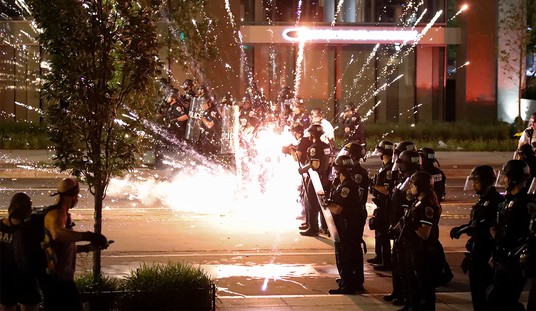One of the more intriguing and lesser-known stories of World War II is the USS Indianapolis, a heavy cruiser that played a crucial role in ending the war against Japan but did not survive to see it.
This weekend, 26,319 days after the fatally-wounded ship capsized and quickly sank creating one of the worst single-ship loss of life in U.S. Navy history, an expedition led by Microsoft co-founder Paul Allen found the wreckage. It was far deeper even than the Titanic, nearly 3.5 miles beneath the surface of the Philippine Sea northeast of the Philippines.
“We’ve located wreckage of USS Indianapolis in Philippine Sea at 5500m below the sea,” tweeted Allen, who also owns the Seattle Seahawks and Portland Trail Blazers. Later, Allen added, “I hope survivors/families gain some closure.” He attached photos taken by a submersible showing the ship’s bell, anchor and hull number 35.
The sinking occurred in the first few minutes of July 30, 1945, just 17 days before Japan surrendered. Imperial submarine I-58 sent two massive torpedoes into the starboard side of the Indianapolis.
It began listing immediately and within 12 minutes capsized to begin its slow-motion ghostly journey more than 18,000 feet down to the sea bottom to rust and rest unseen there for the next 72 years.
More than 300 men went down with the ship. The rest of the 1,196 crew members began their own merciless ordeal adrift, most without lifeboats, water, food or help.
The aftermath was a colossal naval screw-up with distress signals ignored and the overdue ship’s absence un-noted. Not for four days did a patrolling U.S. seaplane just happen to spot survivors and summon more help.
More “survivors” would die adrift than in the actual sinking. Of the 880 helplessly floating, only 321 came out of the water alive; four of them died later.
Many were delusional and hallucinating from dehydration, starvation and salt-water poisoning. Some had given up hope of rescue and reportedly committed suicide. Sharks ate an unknown number. (As Capt. McVay, Nicolas Cage survived in last year’s movie of the disaster, “Men of Courage.”)
Launched in 1931, the Indianapolis cruise log reads like a history book. It ferried President Roosevelt. Its stops included many in the Allied island-hopping campaign to defeat the Empire of Japan. Her ensuing engagements ranged from Alaska to the tropics and back to the Japanese home islands.
Until the torpedo attack, the Indianapolis’ story was full of success, service and good luck. On Dec. 7, 1941, she was 750 miles from Pearl Harbor practicing bombardment.
Among its many armaments the cruiser had nine eight-inch guns used to soften countless invasion beaches from the Japanese-held Aleutians to Tarawa, the Carolines, New Guinea, Saipan, Tinian, Guam, Iwo Jima and Okinawa.
During the bombardment of Okinawa in March of 1945 the Indianapolis poured 200 mm shells onto the heavily-fortified island for seven straight days. On March 31 a Japanese fighter broke through fleet air defenses. Its bomb hit the Indianapolis, plunging unexploded through the entire ship — the deck, mess hall, bunk rooms, fuel tanks and keel before detonating in the water beneath the ship.
The concussion took the ship out of service, sending it back for repairs to Mare Island near San Francisco. But that positioned the Indianapolis to play a vital role in ending the war.
On July 16, just hours after the Manhattan Project’s first successful test in New Mexico, Indianapolis set sail from California on a high-speed, secret mission to Tinian Island.
At 29 knots, the cruiser carried a precious quantity of the world’s limited enriched uranium and parts for Little Boy, the atom bomb that would forever alter warfare and devastate Hiroshima three weeks later on Aug. 6. The U.S. had supplies for only two atom bombs; with no Japanese surrender in sight, the last one flattened Nagasaki on Aug. 9.
Had the Indianapolis been sunk before the July 26 delivery of precious supplies, no one knows how much longer the war would have lasted.








Join the conversation as a VIP Member